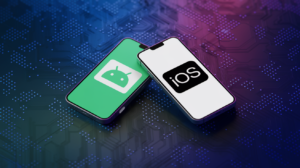Technology is evolving at a rapid pace, and smartphones are now everywhere—a reality that was once unimaginable. From early mobile devices to today’s cutting-edge foldable smartphones, it’s fascinating to see how ideas once dreamed of have become tangible. Alexander Graham Bell invented the first telephone, and years later, Martin Cooper brought us the first mobile phone, known as the “Brick” for its bulky design and limited 30-minute battery life. Since then, mobile technology has grown into a major industry, sparking new innovations and even entire sectors. Today, let’s dive into one of the latest innovations: foldable smartphones.
History of Foldable Smartphones
Early Concepts and Inspiration
When I first heard of foldable smartphones, I was reminded of early cell phones from brands like Motorola, Nokia, and Samsung. These phones had smaller displays, physical keyboards, and limited features compared to today’s tech—products of the technology limitations of their time. However, they introduced the concept of portability, which remains central to foldable devices today.

The First Foldable Concept
The initial idea for a truly flexible, foldable smartphone appeared in 2008 when Nokia introduced its “Morph” concept. Although it never became a commercial product, it sparked interest in the potential of foldable technology.
Commercial Launch
It wasn’t until November 2018 that the first commercial foldable phone, the Samsung Galaxy Fold, hit the market, signaling the beginning of a new era in mobile technology.
The Business of Foldable Smartphones
Market Growth and Potential
The foldable smartphone market is experiencing rapid growth. Estimated at USD 28.72 billion in 2024, it’s projected to reach USD 63.31 billion by 2029, with a compound annual growth rate (CAGR) of 17.13% from 2024 to 2029. As more companies enter the foldable space, this sector is set to redefine the mobile landscape.
Major Players in the Foldable Market
Leading brands like Motorola (with the Moto Razr 50 Ultra), Samsung (with the Galaxy Fold series), and OnePlus are actively competing to capture consumer interest in foldable smartphones. Their innovations and marketing efforts are driving demand, positioning foldable phones as the future of mobile tech.
Challenges with Foldable Smartphones
Despite their appeal, foldable smartphones face significant challenges that manufacturers are working to overcome:
- Price: Foldable smartphones are still expensive, limiting their accessibility to high-end consumers. Many budget-conscious buyers prefer mid-range alternatives.
- Display Durability: Foldable displays can be more prone to wear and tear due to repeated bending, which can affect their longevity.
- Battery Life: The unique design of foldable phones can impact battery capacity and life, which can be a concern for heavy users.
- Market Access: As new technology, foldable phones are not yet as widely available in all regions, making it harder for some consumers to access these devices.
Popular Foldable Smartphones Available Today
Today’s market offers several exciting foldable models, including:
- Samsung Galaxy Fold Series: Known for its innovative design and reliable performance, Samsung continues to lead in foldable technology.
- Motorola Razr 50 Ultra: This model revives Motorola’s iconic flip-phone design with a modern twist, appealing to both nostalgic and tech-savvy users.
- OnePlus Fold: Another major competitor in the foldable space, OnePlus offers a high-quality alternative with unique features.
Final Thoughts
The journey from early flip phones to today’s foldable smartphones showcases how far mobile technology has come. While foldable devices face challenges—especially with price, durability, and accessibility—their innovation cannot be denied. As technology advances and these issues are addressed, foldable smartphones have the potential to become a mainstream choice for consumers, changing the way we interact with our devices.







